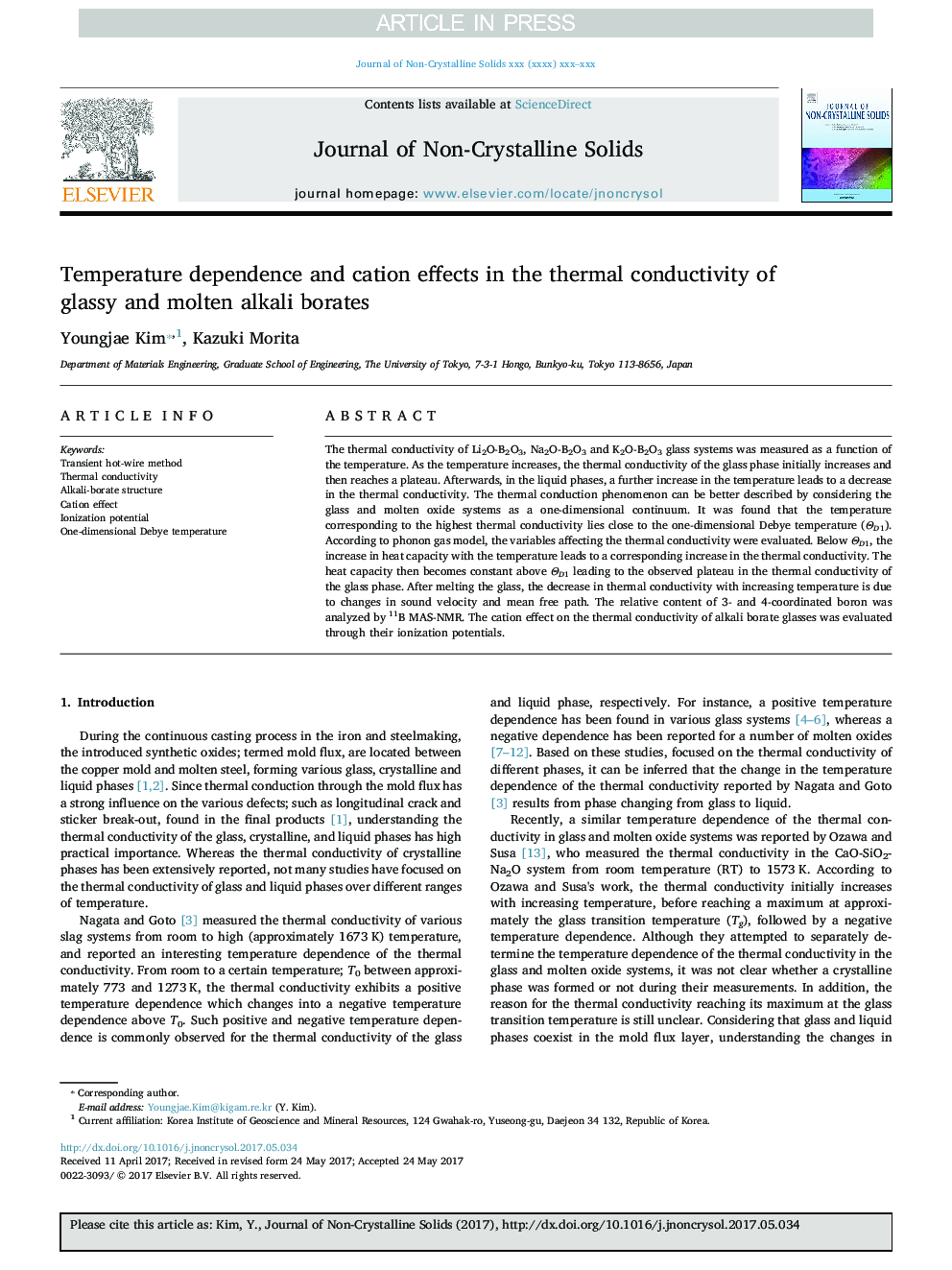| Article ID | Journal | Published Year | Pages | File Type |
|---|---|---|---|---|
| 5441078 | Journal of Non-Crystalline Solids | 2017 | 8 Pages |
Abstract
The thermal conductivity of Li2O-B2O3, Na2O-B2O3 and K2O-B2O3 glass systems was measured as a function of the temperature. As the temperature increases, the thermal conductivity of the glass phase initially increases and then reaches a plateau. Afterwards, in the liquid phases, a further increase in the temperature leads to a decrease in the thermal conductivity. The thermal conduction phenomenon can be better described by considering the glass and molten oxide systems as a one-dimensional continuum. It was found that the temperature corresponding to the highest thermal conductivity lies close to the one-dimensional Debye temperature (ÎD1). According to phonon gas model, the variables affecting the thermal conductivity were evaluated. Below ÎD1, the increase in heat capacity with the temperature leads to a corresponding increase in the thermal conductivity. The heat capacity then becomes constant above ÎD1 leading to the observed plateau in the thermal conductivity of the glass phase. After melting the glass, the decrease in thermal conductivity with increasing temperature is due to changes in sound velocity and mean free path. The relative content of 3- and 4-coordinated boron was analyzed by 11B MAS-NMR. The cation effect on the thermal conductivity of alkali borate glasses was evaluated through their ionization potentials.
Related Topics
Physical Sciences and Engineering
Materials Science
Ceramics and Composites
Authors
Youngjae Kim, Kazuki Morita,
